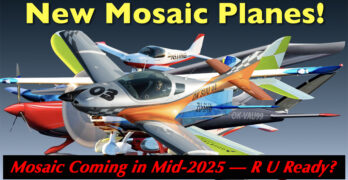Readers who scour the Internet looking for fascinating Light-Sport Aircraft may already know Shark. Conceived by Jaro Dostal in the Czech Republic, this design is the latest from a man who has a long, storied history of aircraft for the light aviation set.
Jaro’s work included the Skyboy from the early days of LSA and later the MD-3 SportRider. Both won approval from many pilots.
All Jaro’s designs have one common easily-seen design characteristic: his shark fin vertical tail. Of course, this one is no different in that respect but it is the first to openly embrace the name. With this speedy aircraft already flying in North America and with more on the way, I couldn’t resist the compelling “Shark Attack” title. Let’s check it out.
Shark.Aero
Shark is built at a factory in the country of Slovakia in a region said to be well known for producing innovative designs.










